Sports scandals, across the ages, have not only shocked fans but also raised significant questions about integrity, governance, and ethics in sports. These events often transcend the realm of sports, influencing public opinion and the broader cultural and regulatory landscape. From doping to corruption, and from match-fixing to inappropriate behavior, the ramifications of these scandals can be profound, affecting athletes, teams, leagues, and entire sports.
In this article, we’ll delve deep into the top 10 sports scandals that have rocked the world, exploring the details of each incident, the reactions they provoked, and the long-term impacts they have had on the sports community and beyond.
The scandals chosen for this discussion have been selected based on their magnitude, the level of public and media attention they received, and their enduring impact on sports. These events range from Olympic-sized deceptions to infractions in professional leagues, highlighting the vulnerabilities and challenges within various facets of sports management and ethics. As we explore each scandal, we will uncover not only the details of the events themselves but also the lessons learned and the reforms implemented in their aftermath.
Here are the Top 10 Sports Scandals That Rocked the World
1. The 1919 Black Sox Scandal
Background and Event
The 1919 Black Sox Scandal is an infamous chapter in the annals of American sports history, primarily involving eight players from the Chicago White Sox. These players were accused of conspiring to lose the 1919 World Series intentionally against the Cincinnati Reds. The alleged motivation was financial gain, with players receiving bribes from gamblers to throw the games. This scandal unfolded in the backdrop of a sport that was America’s pastime, deeply ingrained in the national culture, making the betrayal feel even more significant.
The key players involved included “Shoeless” Joe Jackson, Eddie Cicotte, and Chick Gandil, who were among the most prominent figures of their time. Despite Jackson’s later claims of innocence and his stellar performance during the series, the evidence suggested a conspiracy that was too elaborate to ignore. The players reportedly received a total of $100,000 (equivalent to about $1.5 million today), a sum that highlighted the substantial influence of gambling in sports during that era.
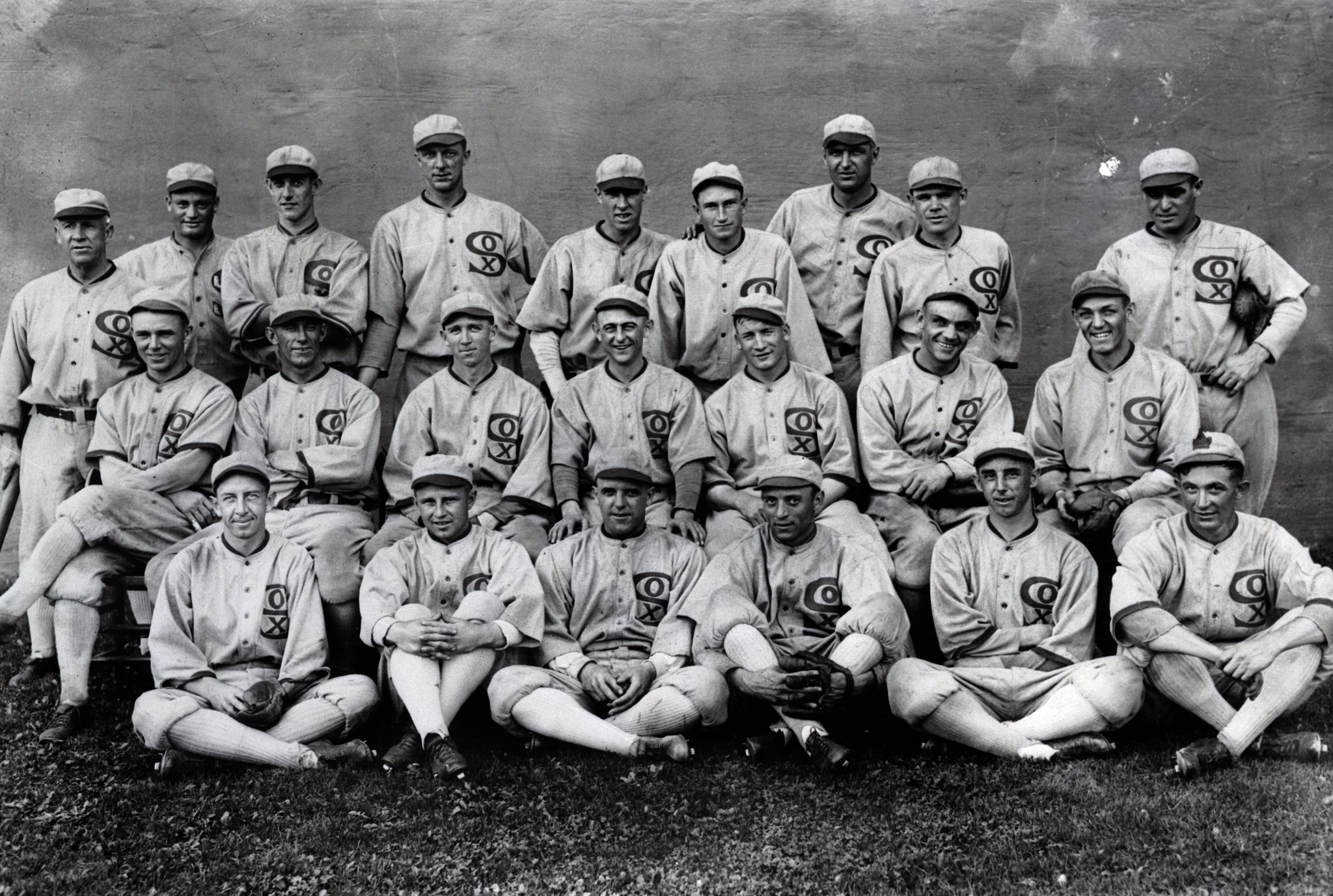
Impact and Reactions
The immediate aftermath of the scandal was a media frenzy that captured the nation’s attention. The 1920 season was overshadowed by the ongoing investigations and trials. In 1921, despite a court acquittal due to insufficient evidence and allegedly misplaced confessions, the newly appointed Commissioner of Baseball, Kenesaw Mountain Landis, took a firm stance against the players involved. All eight were banned from professional baseball for life, a decision that remains controversial to this day, especially concerning Joe Jackson, whose involvement has been debated by historians and fans alike.
Long-term Effects
The long-term effects of the Black Sox Scandal were profound, prompting a complete overhaul of how Major League Baseball was governed. Kenesaw Mountain Landis’s role as Commissioner was established to clean up baseball, with powers that were previously unseen in sports governance. His mandate was clear: restore integrity and public confidence in baseball. Under his leadership, measures were put in place to strictly regulate players’ interactions with gamblers and to maintain the sport’s integrity.
The Black Sox Scandal remains a pivotal moment in sports history, not only for its immediate impact but also for its enduring legacy in prompting reforms that shaped the modern governance of sports. Its story is a cautionary tale that continues to resonate, serving as a reminder of the potential consequences when integrity is compromised for financial gain.
2. The 1988 Seoul Olympics Doping Scandal
Background and Event
The 1988 Seoul Olympic Games were supposed to be a showcase of the world’s finest athletes competing at the highest level of sportsmanship. However, the event was overshadowed by one of the most significant doping scandals in Olympic history involving Canadian sprinter Ben Johnson. Johnson, who had won the gold medal in the 100-meter sprint, stunning the world by defeating his American rival Carl Lewis, tested positive for an anabolic steroid called stanozolol shortly after his victory.
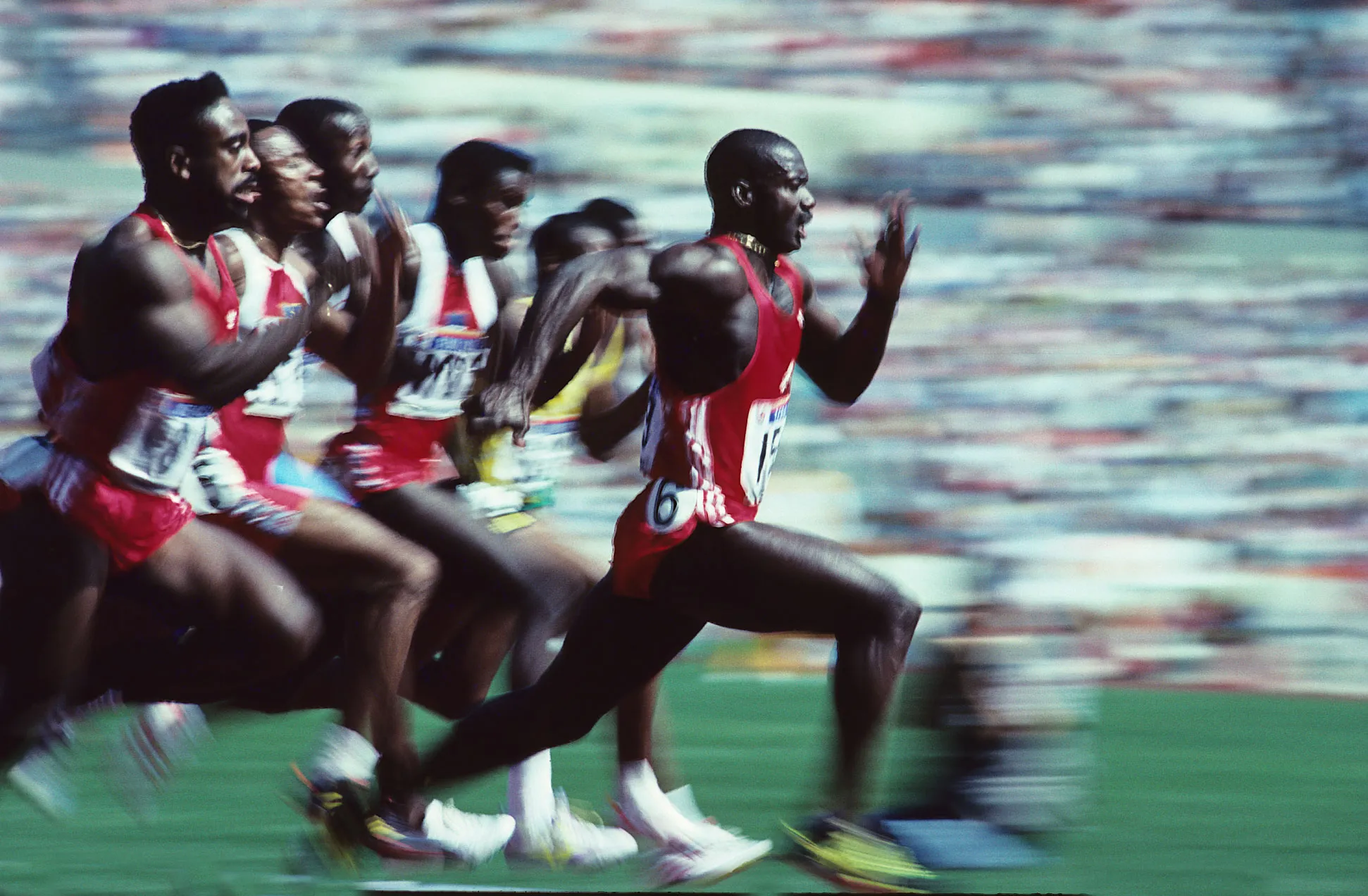
This incident was not just about the fall from grace of a single athlete; it symbolized a larger crisis in competitive sports—systematic doping. The scandal exposed the widespread use of performance-enhancing drugs at the elite level, highlighting the intense pressure athletes faced to achieve victory at any cost.
Impact and Reactions
The revelation that Ben Johnson, a celebrated Olympic champion, had used steroids provoked a global outcry and brought the issue of drug use in sports into the public consciousness like never before. Johnson was stripped of his gold medal and world record, and his disgrace was felt by Canada and the international athletic community. The scandal sparked a new level of media coverage on doping in sports, leading to public debates about the integrity of athletics and the effectiveness of anti-doping measures.
Long-term Effects
The long-term effects of the 1988 doping scandal were profound, leading to several reforms in international sports governance. The World Anti-Doping Agency (WADA) was eventually established in 1999 as a direct response to this and subsequent doping controversies. WADA’s creation marked a significant step forward in the global fight against doping in sports, providing a unified set of anti-doping rules initially adopted by all Olympic sports.
The scandal remains a pivotal point in Olympic history, continuously cited as a turning point that forced the sports world to reconsider and reinforce the ethical boundaries of competitive sports. Its legacy is a sport system far more vigilant and equipped to handle the challenges of doping, although the battle against performance-enhancing drugs is far from over.
3. The 2007 Formula One Spygate Scandal
Background and Event
The 2007 Formula One season witnessed one of the biggest controversies in the history of motorsport, known as the “Spygate” scandal. It involved two of the top teams in the sport: McLaren and Ferrari. The scandal unfolded when it was discovered that McLaren had come into possession of over 780 pages of confidential Ferrari technical documents. This information covered detailed engineering and strategic data, which could potentially give McLaren an unfair advantage in terms of car performance and race strategy.
The saga began when a Ferrari engineer left the team and took with him numerous confidential documents, which he subsequently shared with a McLaren engineer. The exchange of such sensitive information was a clear breach of both the ethical standards and the regulations governing Formula One, making this not only a matter of competitive integrity but also of legal concern.

Impact and Reactions
The discovery of the espionage led to a massive uproar within the Formula One community and among fans worldwide. The International Automobile Federation (FIA), governing body of Formula One, took immediate action by launching a thorough investigation into the matter. McLaren faced the FIA’s World Motor Sport Council where they were initially found guilty of possessing confidential information but were not yet penalized pending further evidence.
As the season progressed and more evidence came to light, McLaren was eventually handed a record-breaking fine of $100 million and was disqualified from the Constructors’ Championship for the season. This penalty not only affected McLaren financially but also damaged their reputation severely.
Long-term Effects
The long-term ramifications of the Spygate scandal were significant for Formula One. It led to a stricter enforcement of the regulations regarding the confidentiality and exchange of technical information between teams. The FIA increased its oversight and monitoring activities to prevent such incidents from occurring in the future, leading to changes in how teams handled sensitive data.
The Spygate scandal remains one of the most dramatic episodes in Formula One history, serving as a stern reminder of the consequences of undermining the spirit of competition. It fundamentally changed how teams compete and collaborate, ensuring that the focus remains on innovation and fair play.
4. The 2013 Biogenesis Major League Baseball Scandal
Background and Event
The 2013 Biogenesis scandal is one of the most significant doping incidents in Major League Baseball (MLB) history. It revolved around the Biogenesis of America clinic in Florida, which was found to have supplied performance-enhancing drugs (PEDs) to a large number of MLB players. The clinic’s proprietor, Tony Bosch, was at the center of this scandal, providing substances such as human growth hormone, testosterone, and anabolic steroids to players.
The scandal came to light when an investigative report by the “Miami New Times” published detailed records from the clinic, implicating several high-profile players. Among the most notable was Alex Rodriguez, one of baseball’s most celebrated figures. The documents revealed an extensive network of players linked to Bosch, who were using PEDs to enhance their on-field performance.
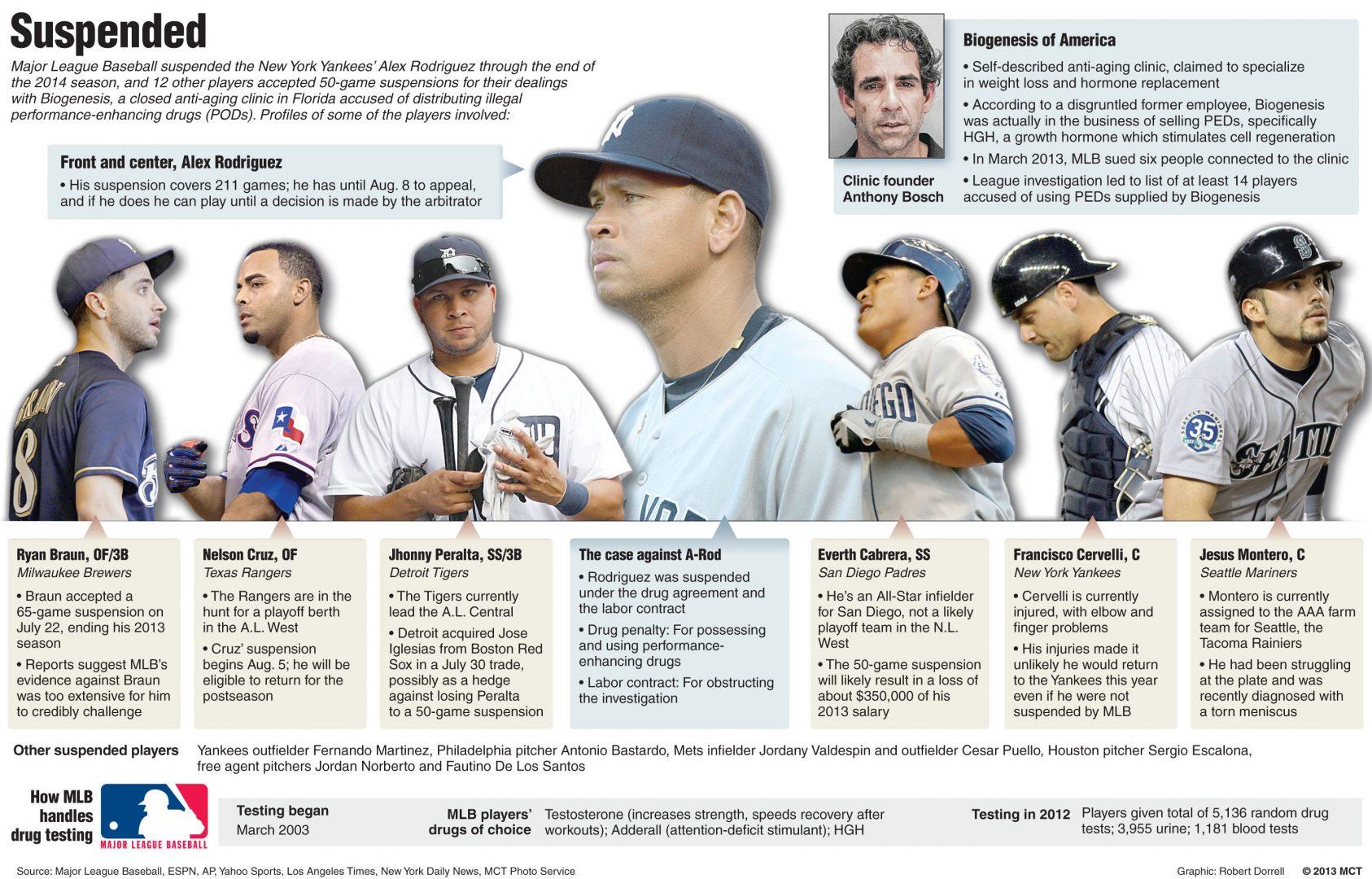
Impact and Reactions
The immediate fallout was immense. MLB launched a comprehensive investigation, leading to the suspension of 14 players associated with the Biogenesis clinic. Alex Rodriguez received the harshest penalty: a suspension for 211 games, later reduced to 162 games, effectively sidelining him for the entire 2014 season. The suspensions sent shockwaves through the sport, highlighting the ongoing battle against doping in baseball.
The scandal reignited debates over the MLB’s drug policies and their enforcement. It led to calls for stricter regulations and harsher penalties for doping offenses. Public and media scrutiny intensified, putting pressure on MLB management to take decisive action to clean up the sport. The integrity of baseball was again under question, reminiscent of the steroid era controversies of the late 1990s and early 2000s.
Long-term Effects
The long-term implications of the Biogenesis scandal were significant for MLB. It led to enhancements in the drug testing program and stricter penalties for PED use. MLB adopted a more rigorous approach to drug testing, including increased random testing and better detection methods for sophisticated substances. The league also instituted tougher penalties for first-time and repeat offenders in an effort to deter players from considering PED use.
The Biogenesis scandal served as a critical juncture for Major League Baseball in its ongoing efforts to eradicate doping. It spurred a reevaluation of how the sport handles ethics and compliance, emphasizing the importance of maintaining a clean and fair competitive environment. This scandal remains a stark reminder of the challenges sports organizations face in preserving the integrity of their competitions in the modern era of high-stakes professional sports.
5. The 2002 Winter Olympics Figure Skating Scandal
Background and Event
The 2002 Winter Olympics in Salt Lake City was marred by a figure skating scandal that exposed deep flaws in the judging system of the sport. The controversy centered around the pairs’ figure skating competition, where Russian skaters Elena Berezhnaya and Anton Sikharulidze were awarded the gold medal over Canadian skaters Jamie Salé and David Pelletier, despite several noticeable technical errors in the Russians’ performance. The decision led to an immediate outcry among fans, commentators, and the athletes themselves, who felt the results were unjust.
Suspicion of foul play was confirmed when French judge Marie-Reine Le Gondal admitted to being pressured to favor the Russian pair by her national federation in exchange for a favorable judgment towards the French ice dance team in a subsequent event. This revelation triggered one of the biggest scandals in Olympic history, highlighting the vulnerability of subjective scoring sports to manipulation.

Impact and Reactions
The impact of the scandal was immediate and far-reaching. The International Olympic Committee (IOC) and the International Skating Union (ISU) faced significant public backlash, which pressured them to award a second gold medal to the Canadian pair in a move unprecedented in the history of the Olympics. This decision was intended to placate the public and restore trust in the fairness of the Olympic competitions.
In response to the scandal, there were immediate calls for reform within the ISU to overhaul the judging system to prevent such incidents from recurring. The scandal brought to light not only the susceptibility of figure skating to subjective biases but also the potential for nationalistic underpinnings to influence the outcomes of competitions.
Long-term Effects
The long-term effects of the 2002 figure skating scandal were profound. The ISU completely revamped its scoring system, moving away from the traditional 6.0 system to the International Judging System (IJS), which includes more detailed criteria and a points-based system to quantify athletes’ performances more objectively. This new system aimed to make the scoring more transparent and reduce the influence of subjective preferences and potential corruption.
6. The 2015 FIFA Corruption Scandal
Background and Event
The 2015 FIFA corruption scandal is one of the most expansive corruption cases in the history of sports, involving senior FIFA officials and spanning several decades. The scandal came to a head in May 2015 when the United States Department of Justice indicted several FIFA executives on charges including racketeering, wire fraud, and money laundering. The allegations centered around the acceptance of bribes and kickbacks from television and marketing firms in exchange for exclusive contracts to major FIFA tournaments, including the World Cup.
The arrests were made in Zurich, Switzerland, just as FIFA was preparing for its annual congress. The revelations shocked the world and led to a crisis in international soccer, raising serious questions about the integrity and governance of the sport’s highest governing body.
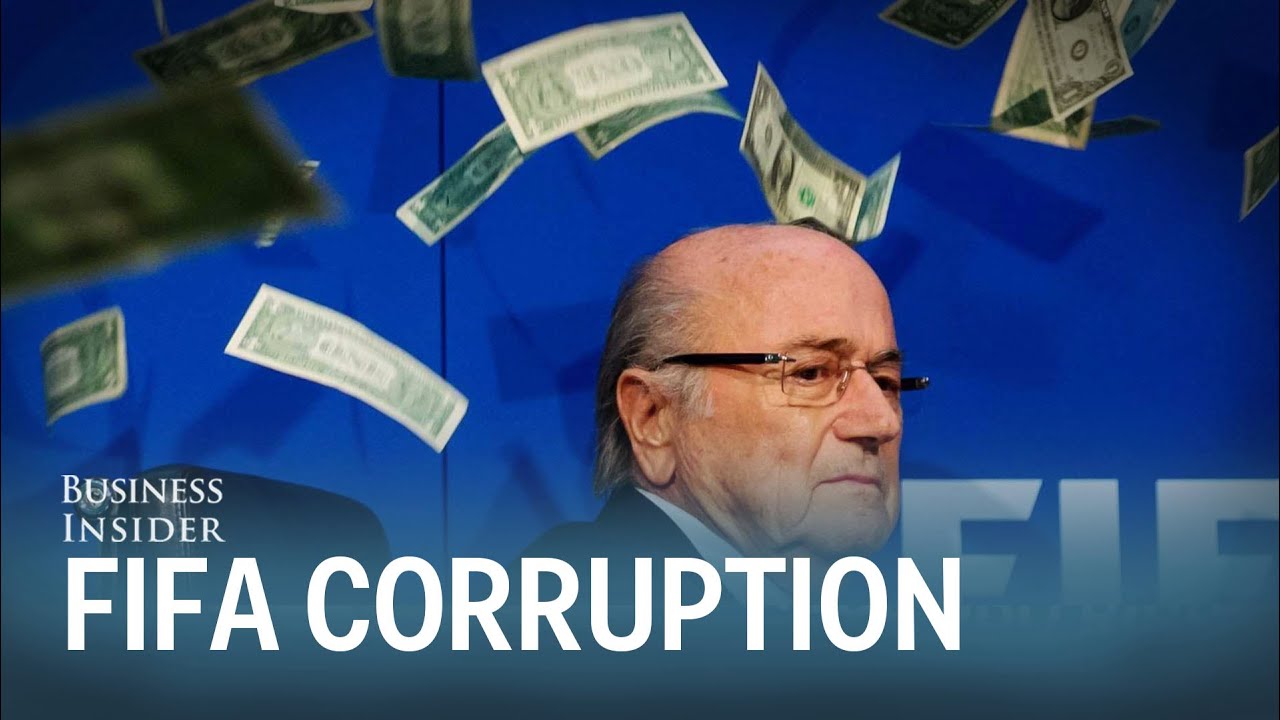
Impact and Reactions
The immediate fallout was dramatic. Several high-profile FIFA officials, including vice-presidents and members of the executive committee, were arrested or subjected to investigations. Sepp Blatter, who had been FIFA’s president since 1998, initially won re-election during the crisis but soon announced he would resign, leading to a leadership vacuum and calls for profound reforms within FIFA.
The scandal prompted widespread condemnation from the international community, fans, and players alike. It exposed a culture of ingrained corruption that seemed to pervade international soccer, from the allocation of World Cup hosting rights to the distribution of broadcasting deals and sponsorship agreements.
Long-term Effects
The long-term implications of the FIFA corruption scandal have been extensive. FIFA undertook a series of governance reforms, including the implementation of term limits for presidents and transparency measures in financial transactions and decision-making processes. The organization also sought to rebuild its reputation by promoting greater ethical standards and oversight.
The 2015 FIFA corruption scandal remains a pivotal moment in sports history, underscoring the need for continuous vigilance and reform in the governance of global sports institutions. The ongoing efforts to clean up FIFA and restore its credibility reflect the challenges and complexities of managing an international sport in the modern era.
7. The 2007 NBA Betting Scandal
Background and Event
The 2007 NBA betting scandal was a jarring revelation that involved NBA referee Tim Donaghy, who was found to have bet on games that he officiated during the 2005-2007 seasons. This scandal not only called into question the integrity of officiating in professional basketball but also raised serious concerns about the vulnerability of sports to gambling influences. Donaghy’s actions included making calls that could affect the point spread to ensure he won bets, a clear and egregious violation of NBA rules and the trust placed in officials.
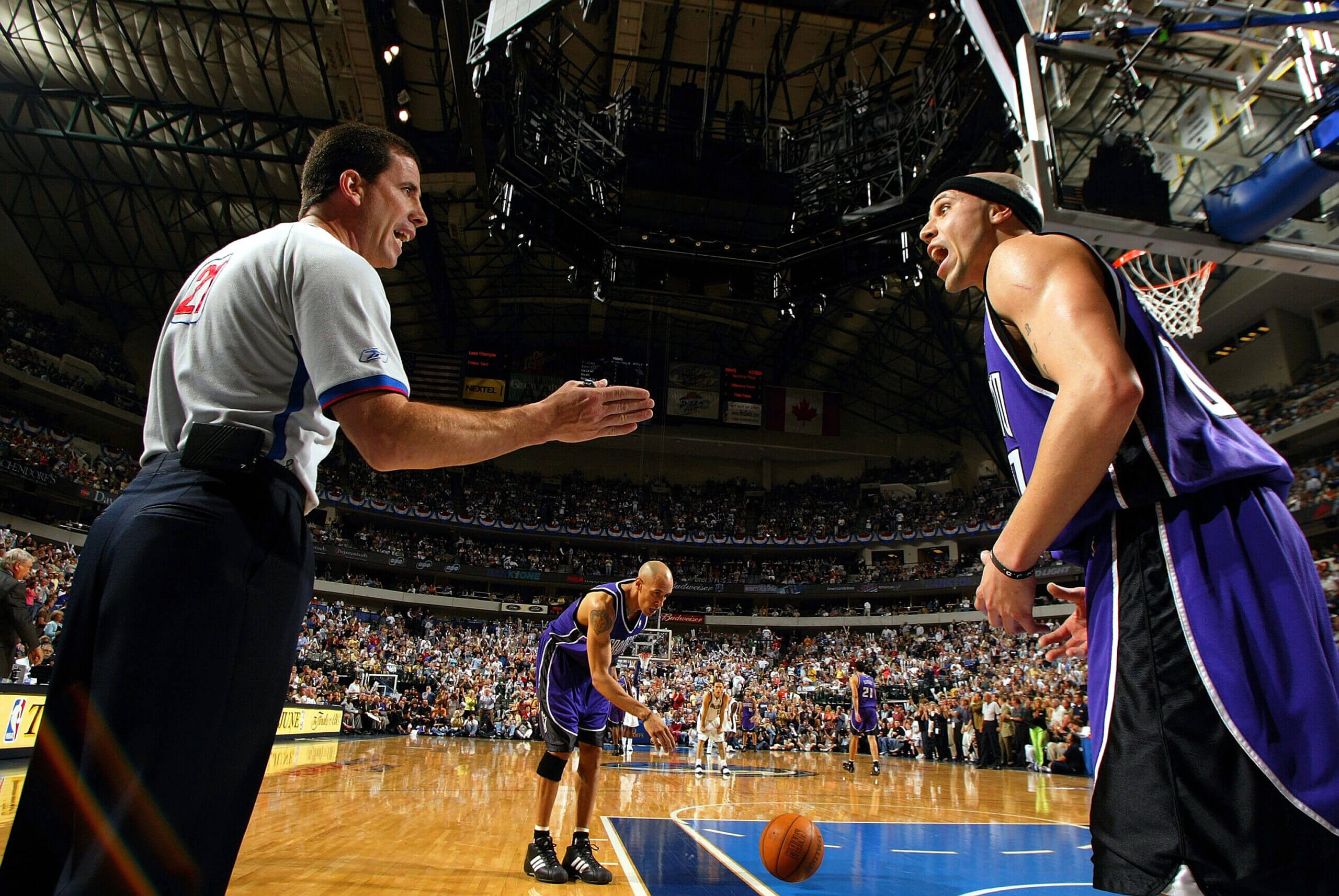
Impact and Reactions
The discovery of Donaghy’s betting had a profound impact on the NBA’s reputation. Fans, players, and other referees were left to wonder about the fairness of past games and the overall integrity of the league. The NBA took swift action, cooperating with the FBI investigation and ultimately seeing Donaghy confess to two federal charges related to conspiracy to engage in wire fraud and transmitting betting information through interstate commerce.
In response to the scandal, NBA Commissioner David Stern faced criticism over the league’s handling of referees and their monitoring. Stern defended the league’s practices but also acknowledged the need for reforms. This led to several changes in how referees were monitored and evaluated, as well as the establishment of stricter guidelines and oversight mechanisms to prevent such incidents from occurring in the future.
Long-term Effects
The long-term effects of the NBA betting scandal include a reshaping of the public and media’s perception of the integrity of NBA games. The league implemented comprehensive reforms to its referee operations, including better scrutiny of referees’ performance, background checks, and more rigorous training and professional standards. These changes were aimed at restoring confidence in the NBA’s officiating and ensuring that the scandal’s legacy would not tarnish the league’s future.
The 2007 NBA betting scandal remains a significant black mark on the league’s history, serving as a cautionary tale about the risks of gambling in sports. It underscores the ongoing need for vigilance and strict governance to uphold the integrity of sports competitions.
8. The 1994 Tonya Harding and Nancy Kerrigan Scandal
Background and Event
The 1994 attack on figure skater Nancy Kerrigan, orchestrated by associates of her rival Tonya Harding, remains one of the most sensational scandals in sports history. Just before the U.S. Figure Skating Championships, a critical event for Olympic qualification, Kerrigan was attacked by a man who struck her knee with a police baton. The assault was later traced back to a conspiracy involving Harding’s ex-husband, Jeff Gillooly, and her bodyguard, Shawn Eckardt. The aim was to incapacitate Kerrigan and secure Harding a spot on the Olympic team.

Impact and Reactions
The attack garnered massive media attention, turning into a national spectacle in the United States. Kerrigan’s plight and Harding’s subsequent involvement became the storyline of the year, overshadowing the sport itself. As investigations unfolded, the public and media scrutinized every detail of Harding’s life and career. When it was revealed that Harding might have had knowledge of the plot, the scandal escalated, leading to immense pressure on sports authorities to take action.
Harding was eventually banned for life by the U.S. Figure Skating Association after pleading guilty to conspiring to hinder the prosecution of the attackers. Kerrigan, on the other hand, recovered in time to compete in the 1994 Winter Olympics, where she won a silver medal, an outcome that was both celebrated and seen as a triumph over adversity.
Long-term Effects
The Kerrigan-Harding scandal had a lasting impact on figure skating and the way athletes are perceived by the public. It brought unprecedented attention to the sport, albeit for negative reasons, and sparked discussions about the immense pressures of competition and the lengths to which individuals might go to win. The scandal also led to increased security measures at sporting events to protect athletes from similar attacks.
The scandal remains a pivotal event in sports history, highlighting the darker side of competitive sports and the impact of personal rivalries on athletes’ careers and lives.
9. The 2012 Penn State Child Sex Abuse Scandal
Background and Event
The 2012 Penn State scandal is one of the darkest chapters in college sports history, involving former assistant football coach Jerry Sandusky and allegations of child sexual abuse that spanned over a decade. Sandusky was found to have sexually abused multiple young boys, many of whom were met through his charitable organization, The Second Mile. The scandal was exacerbated by the alleged failure of Penn State officials, including revered head coach Joe Paterno, to take adequate action after being informed of the abuse, leading to widespread criticism and outrage.
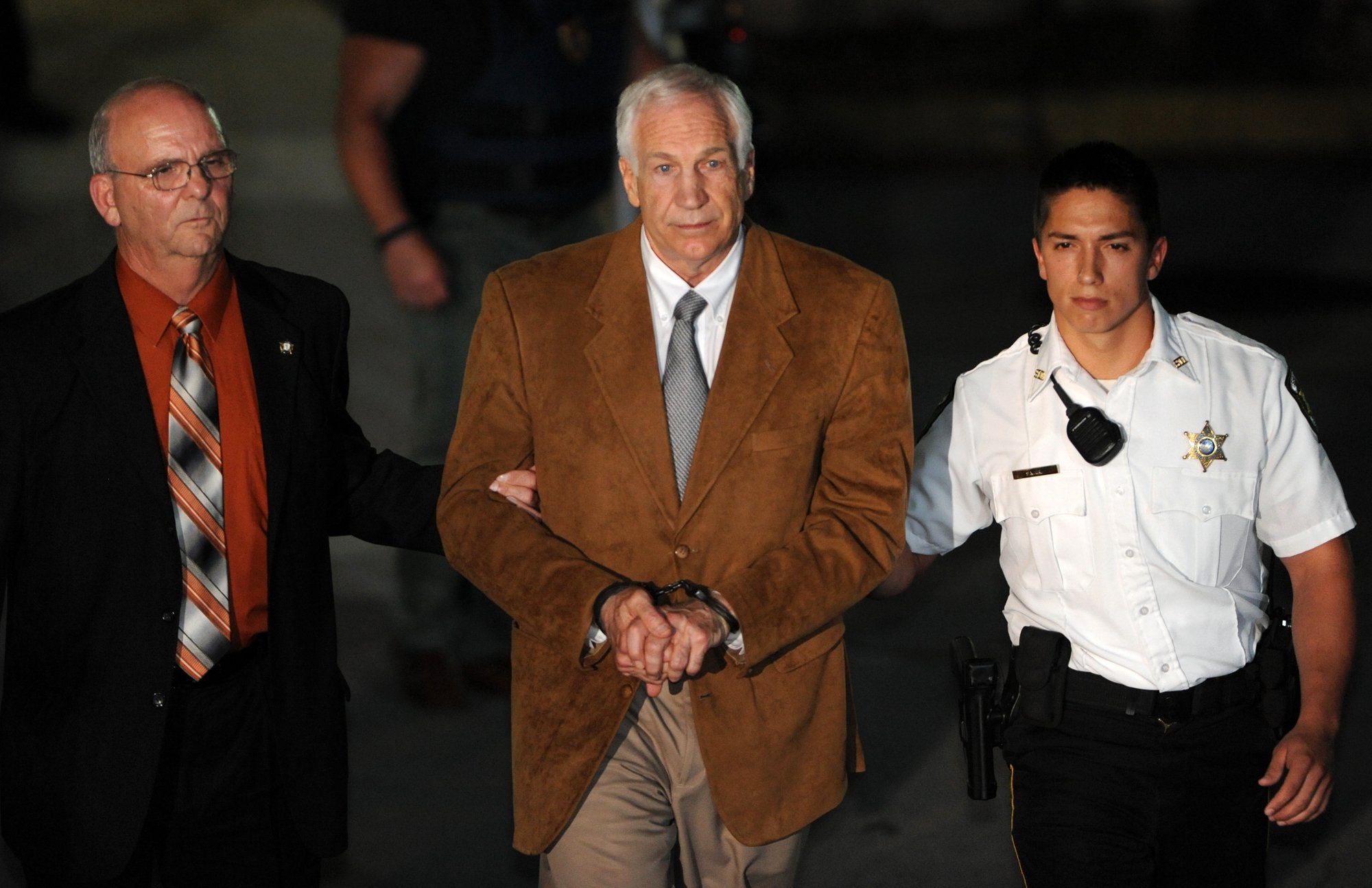
Impact and Reactions
The revelation of the abuse and the subsequent cover-up sent shockwaves through the sports world and beyond, raising serious questions about the culture of college athletics and the responsibilities of those in positions of power. The university faced significant backlash, both legally and publicly. In November 2011, Sandusky was arrested and charged, and high-ranking officials at the university, including President Graham Spanier and Joe Paterno, were dismissed from their positions for their roles in the scandal.
The NCAA imposed severe penalties on Penn State’s football program, including a $60 million fine, a four-year postseason ban, and a significant reduction in scholarships. The NCAA also vacated all wins from 1998 through 2011, significantly impacting the legacy of the football program and Joe Paterno.
Long-term Effects
The long-term effects of the Penn State scandal have been profound, both within the university and across collegiate sports. Penn State implemented sweeping changes in governance and compliance to prevent such failures in the future, and the scandal has led to increased scrutiny of how colleges and universities handle allegations of sexual abuse and misconduct.
The Penn State child sex abuse scandal remains a cautionary tale about the potential consequences of institutional failure to address wrongdoing and the importance of maintaining ethical standards and transparency within educational and sporting institutions.
10. The 1998 Tour de France Doping Scandal
Background and Event
The 1998 Tour de France, also known as the “Festina Affair,” became infamous for being one of the biggest doping scandals in cycling history. The scandal erupted when French customs officials seized a large cache of performance-enhancing drugs, including EPO, growth hormones, and testosterone, from a car driven by the soigneur of the Festina cycling team during the Tour. This discovery led to widespread investigations and the eventual expulsion of the Festina team from the race. The scandal exposed a systematic doping culture not just in Festina, but across the professional peloton, leading to a crisis in professional cycling.

Impact and Reactions
The immediate impact of the scandal was profound. The Tour de France was thrown into chaos, with numerous teams and riders coming under suspicion. Several teams withdrew from the race in protest or were expelled as the scale of doping became apparent. The public and media backlash was intense, with calls for reforms and stricter anti-doping measures within cycling. The image of professional cycling was severely tarnished, leading to a loss of public trust and reduced sponsorship for teams.
The scandal also prompted legal and sports authorities to take action. Many riders were detained and questioned by police, and some were formally charged with using and trafficking banned substances. The cycling world was forced to confront the issue of doping openly and consider serious reforms to clean up the sport.
Long-term Effects
The long-term effects of the 1998 Tour de France doping scandal were significant and led to sweeping changes in how cycling was governed and monitored. It served as a catalyst for the establishment of the World Anti-Doping Agency (WADA) in 1999, which aimed to standardize anti-doping regulations across all sports globally. Within cycling, the Union Cycliste Internationale (UCI) introduced more rigorous doping tests, including blood tests and the biological passport program, which monitors athletes’ blood profiles over time for signs of doping.
The 1998 Tour de France remains a watershed moment in the history of cycling, marking a turning point in the fight against doping in the sport. Its legacy is a reminder of the challenges of maintaining fairness in competitive sports and the ongoing need for vigilance and reform.









